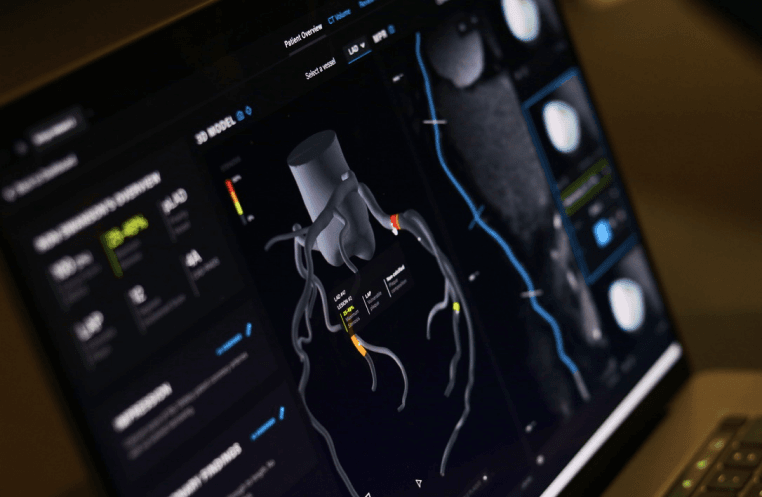How technology is advancing the detection of coronary artery disease.
- Cardiac imaging is the visualisation of the heart.
- Heart scans are performed for the detection and assessment of coronary artery disease.
- CCTA can assess blood vessel narrowing and hardness, but the underlying cause of heart attack – vulnerable plaques – remain difficult to report.
- AI technologies are proving effective at detecting coronary artery disease, including vulnerable plaque.
Cardiac imaging is a specialised area of radiology practice to visualise the heart and its associated valves, vessels and other structures.
The imaging is done using a range of techniques, including X-rays, ultrasound echocardiograms, computerised tomography (CT) scans and magnetic resonance imaging (MRI) scans.
These techniques are used to detect and assess heart conditions, often if a person has experienced chest pain, or to confirm a suspected cardiac diagnosis.
Cardiac imaging is commonly used to investigate and assess coronary artery disease, when the blood vessels supplying oxygen to the heart become blocked over time.
The scans are performed to assess any blockages in the arteries and determine the risk of deposits or narrowing.
Scans often complement a detailed medical history, a resting ECG test, and a stress test (such as having an ECG while running on a treadmill).
Over the last decade, coronary computed tomography angiography has become a leading procedure for the accurate and robust assessment of coronary artery disease in clinical practice.
It allows the evaluation of the blood vessel wall, as well as the lumen. This means it can assess narrowing of the arteries.
Another gold standard diagnostic procedure is the invasive coronary angiogram. This requires the insertion of a wire into a blood vessel in the leg, where it is directed into the coronary arteries.
But coronary angiograms carry the risk of punctures and infection, are costly and time-consuming.
What is coronary computed tomography angiography (CCTA)?
A coronary computed tomography angiography (CCTA) is a scan to visualise your heart. Your doctor may request you have a CCTA to better understand and detect narrowing of the arteries.
It is a first line test for patients who have chest pain after walking less than 200 metres on a flat surface or at rest, or people who continue to experience pain after medical interventions.
The scan is also used in others who are considered high risk, notably those who have survived a sudden heart attack.
It is a powerful technique in heart disease diagnosis.
CCTA allows a non-invasive way to assess the coronary arteries and their narrowing.
With expert reporting, it also allows the assessment of plaque detection – previously only available through invasive angiography – but it is time-consuming and requires expert specialist skills.
Radiologists currently rely on radiographers to prepare and work up the scans before they can assess them. This can take hours and can be affected by human error.
Further, this does not give clinicians an insight into the presence of the underlying cause of heart attack – the presence of vulnerable plaque.
Cardiac imaging for vulnerable plaque.
Cardiac imaging for vulnerable plaque is becoming accepted as a premier way to determine overall heart disease risk.
Vulnerable plaques are fatty deposits in the cardiac arteries that are prone to rupture. When they do, they can break away and block the blood vessel, leading to reduced oxygen available for the heart muscle’s optimal function.
Research is demonstrating their impact in heart attacks.
But vulnerable plaques are not routinely assessed in coronary heart disease diagnosis due to the difficulty, time and risk in their detection.
The future of cardiac imaging.
Automated artificial intelligence and machine learning solutions can visualise cardiac anatomy comprehensively, while also reducing the time taken and risk of error.
The full reporting of cardiac imaging involves not only the biomarkers of narrowing (stenosis) and hardening (calcification) but also the presence of critical vulnerable plaques.
At Artrya our AI software can deliver automated CCTA assessments within minutes, at the point of care.
Artrya has access to more than 50,000 CCTA images and reports, and dual-read images. These are used to train and validate the Salix algorithm.
It demonstrates accuracy comparable with that of a highly skilled and experienced radiologist.
The time-saving will allow consistent detection of disease and risk-making support, as well as efficient workflows in a practice.
At Artrya, we are changing the way the world sees heart disease.
Find out more about Artrya Salix or book a demo.
